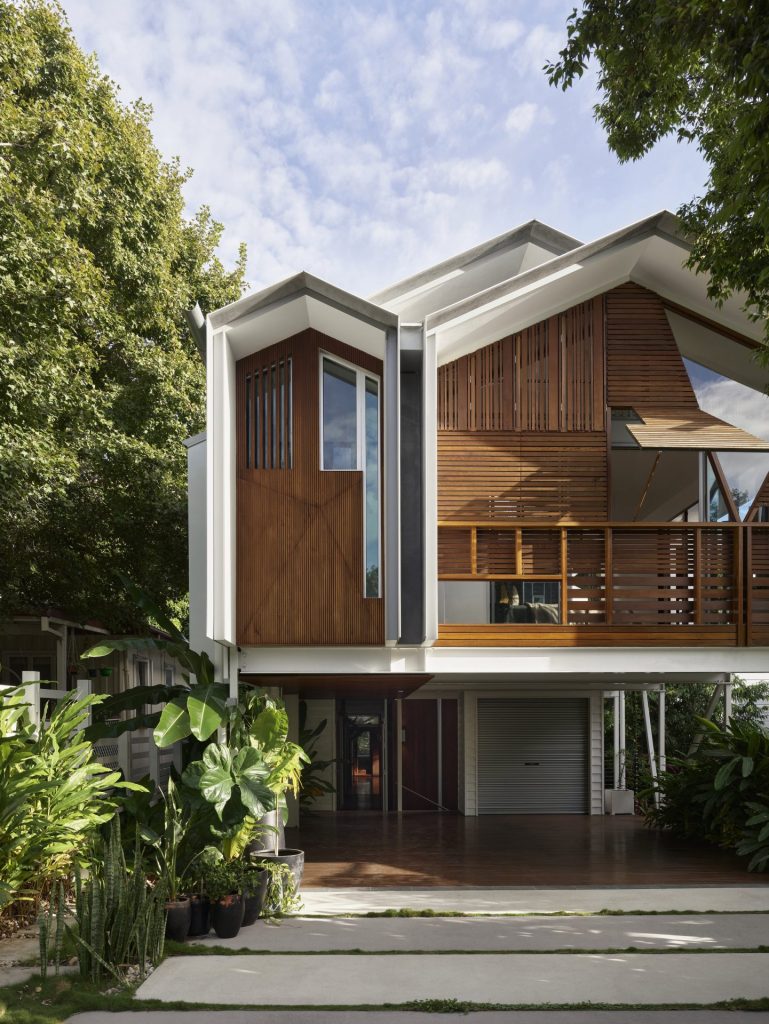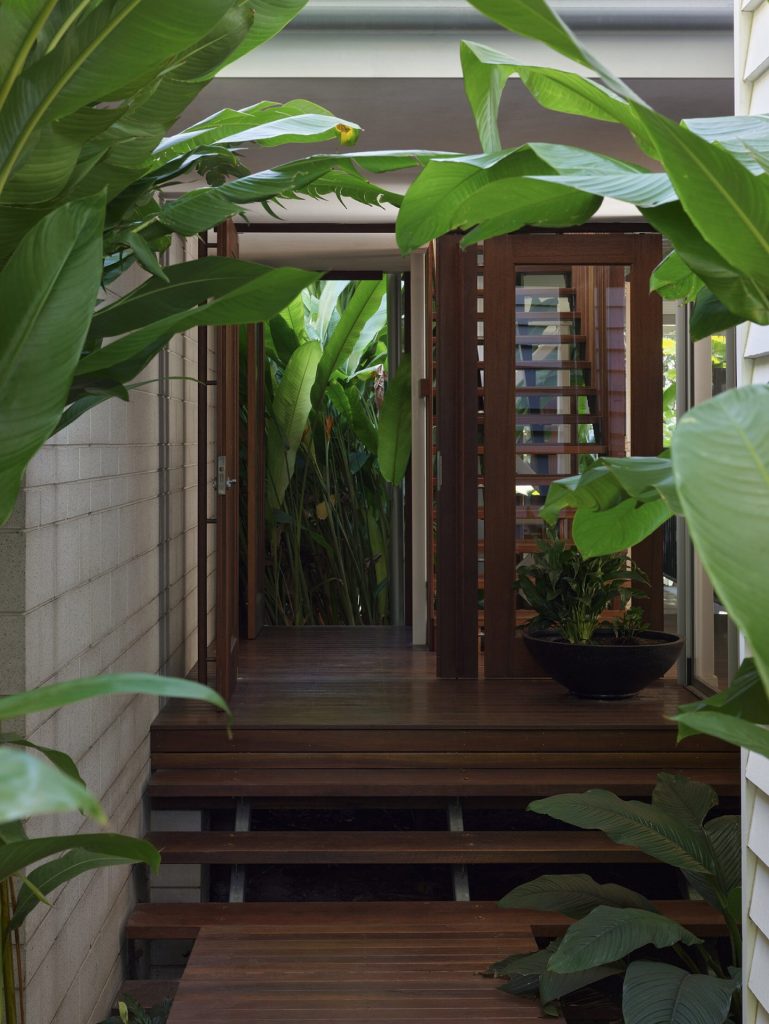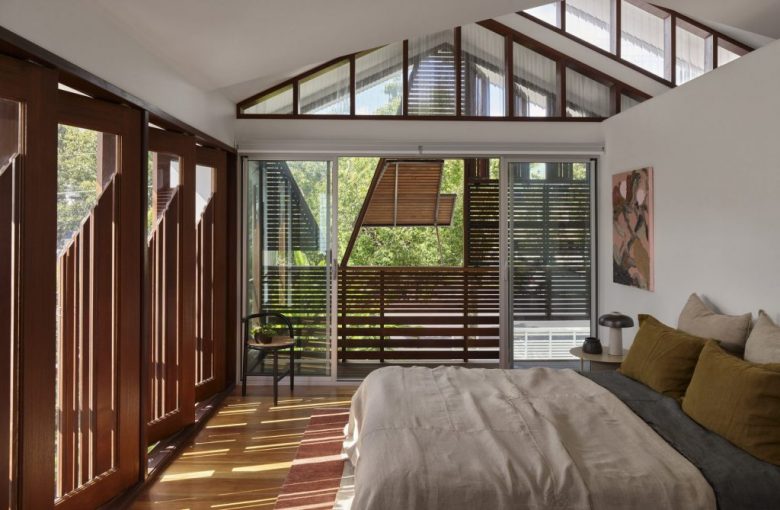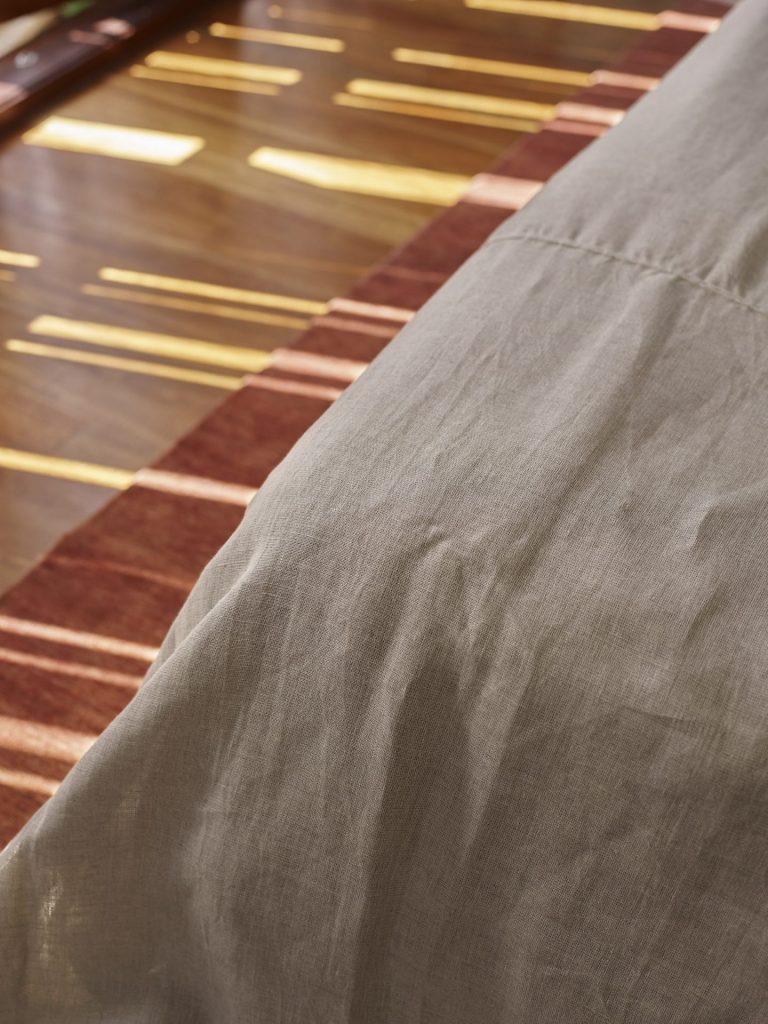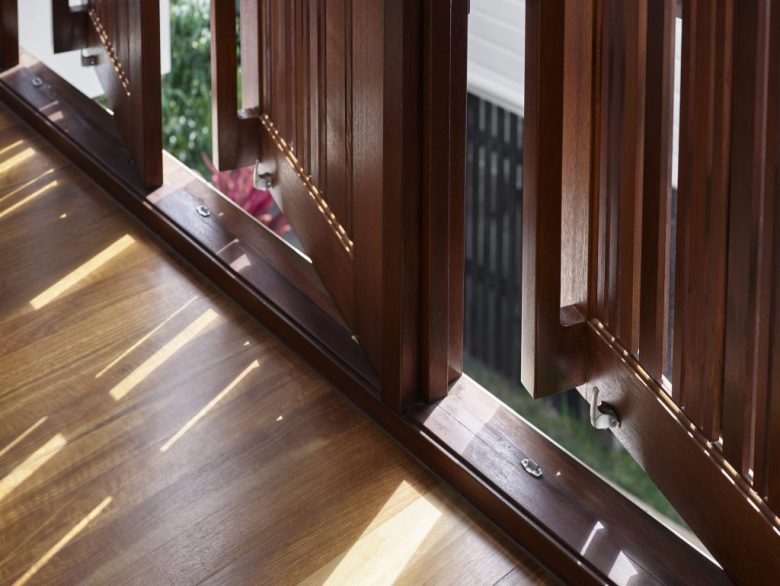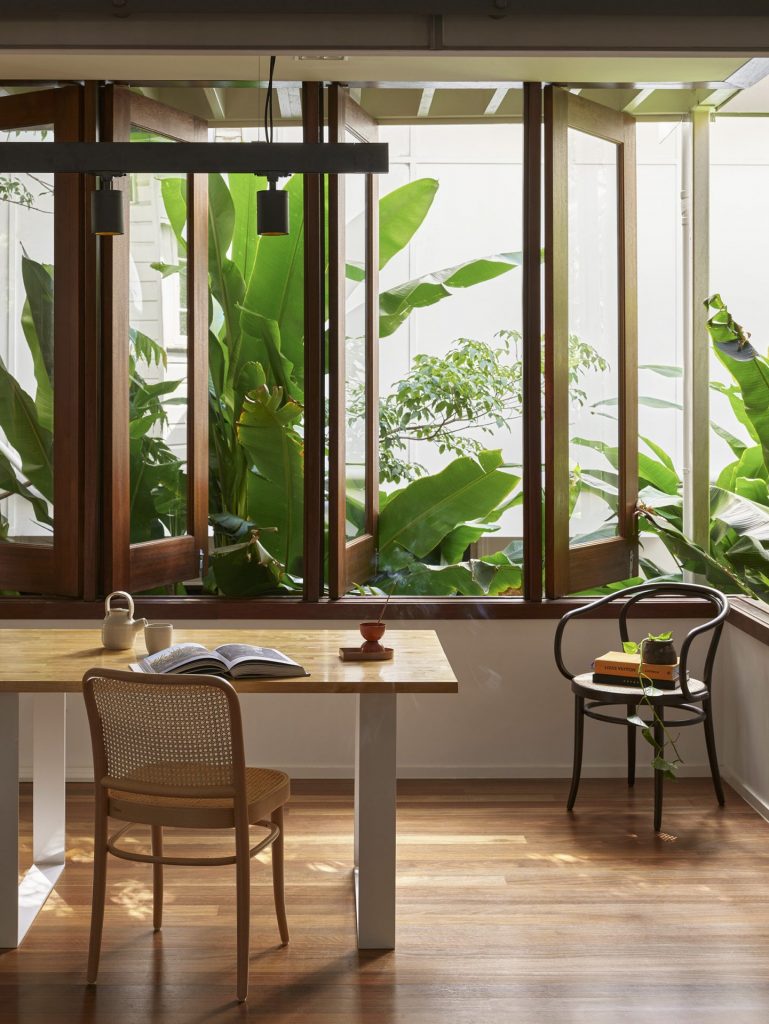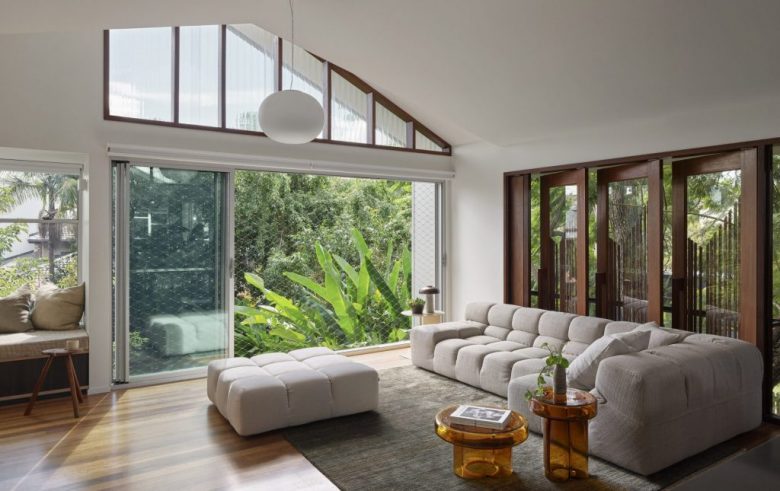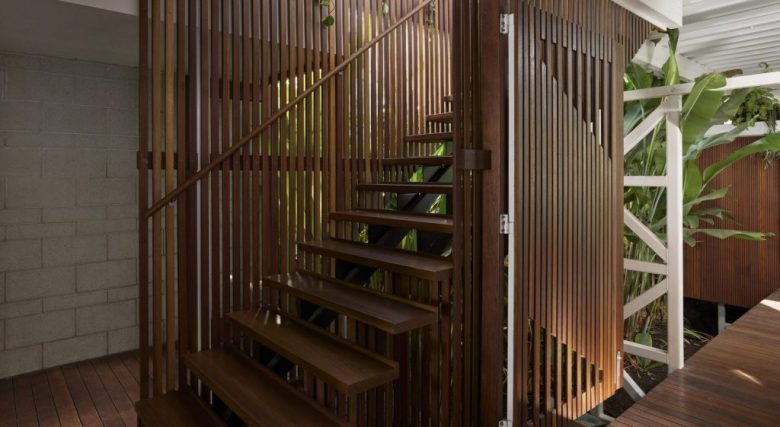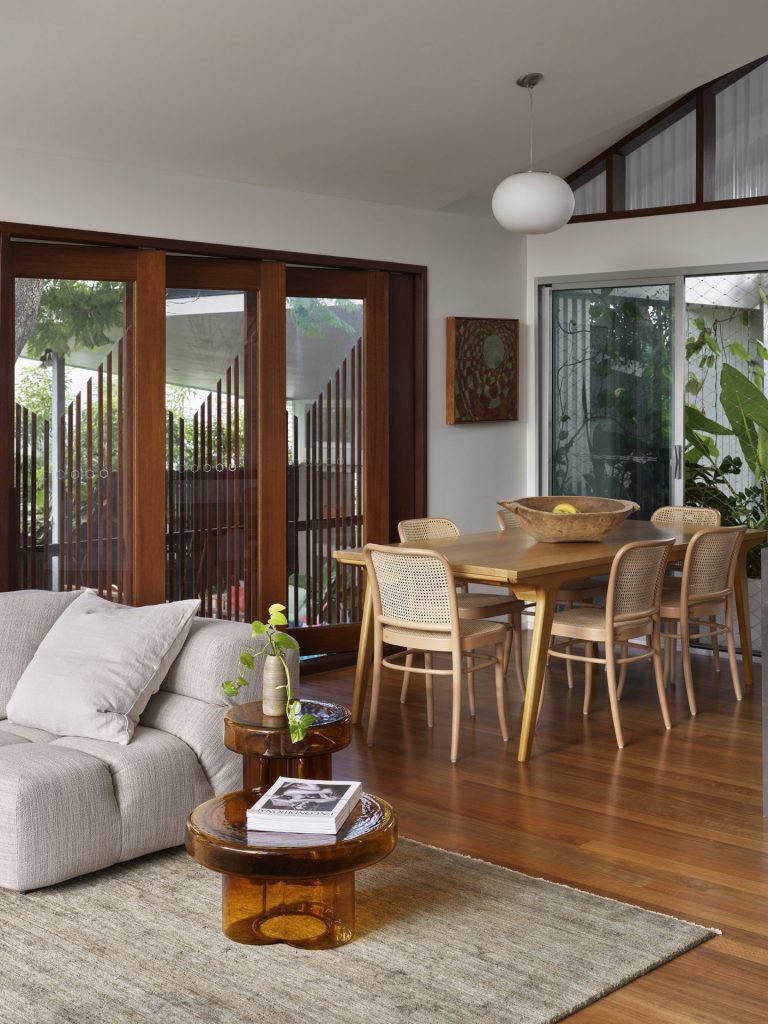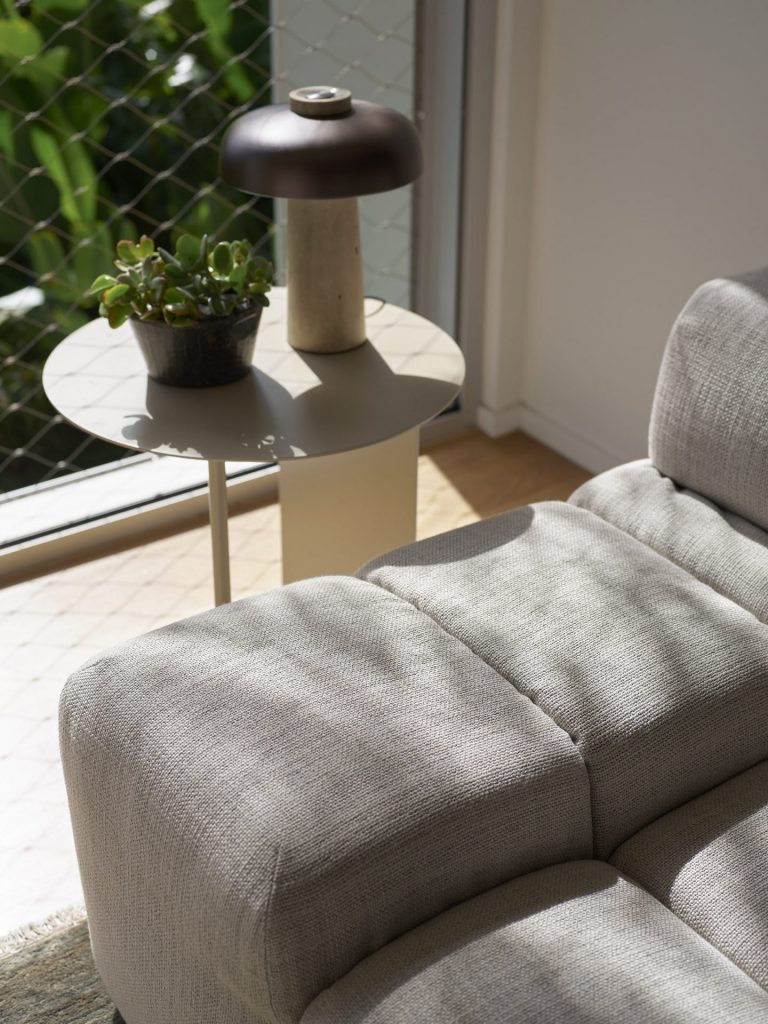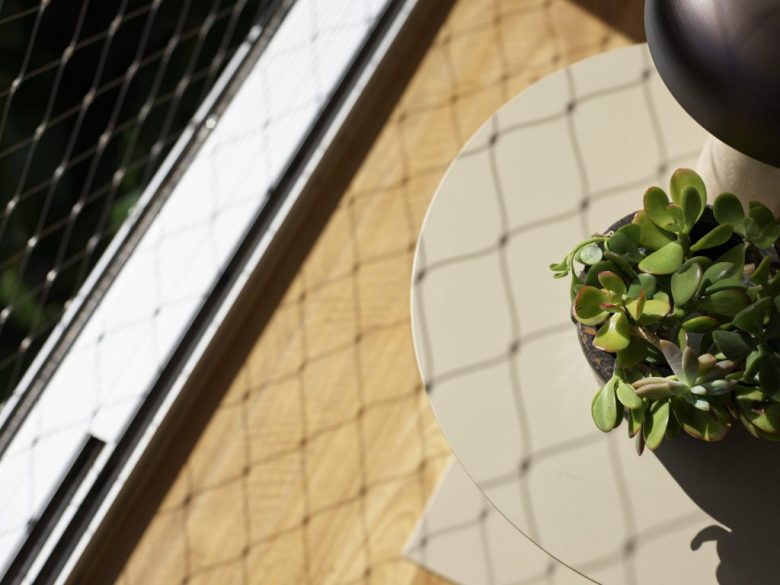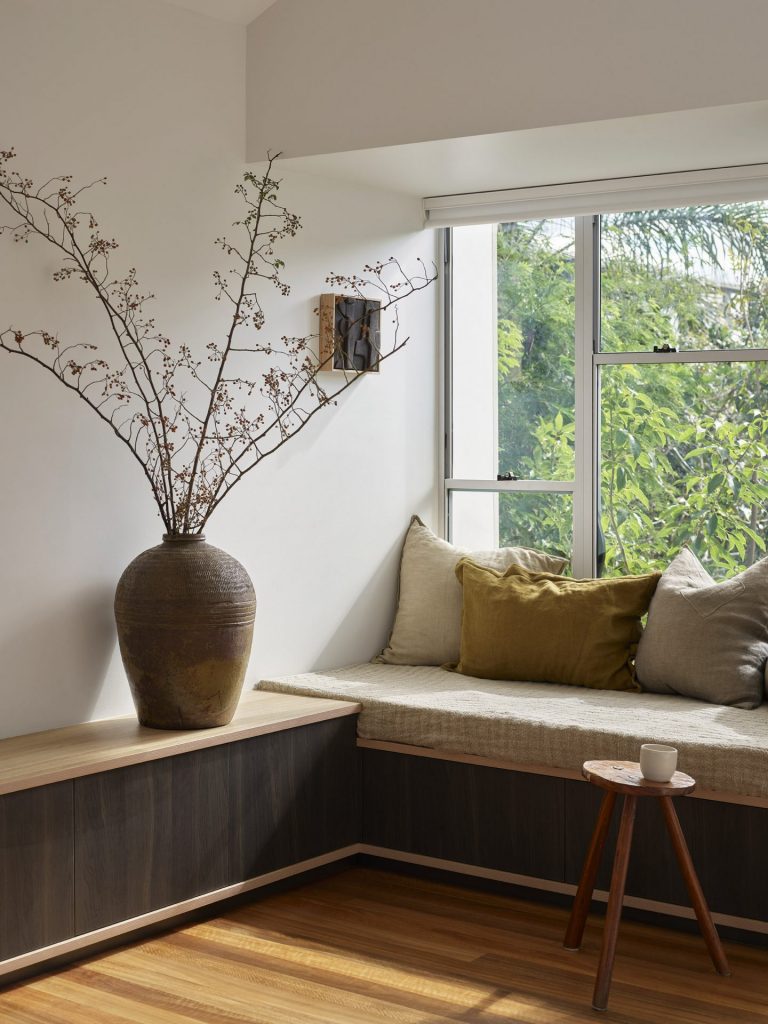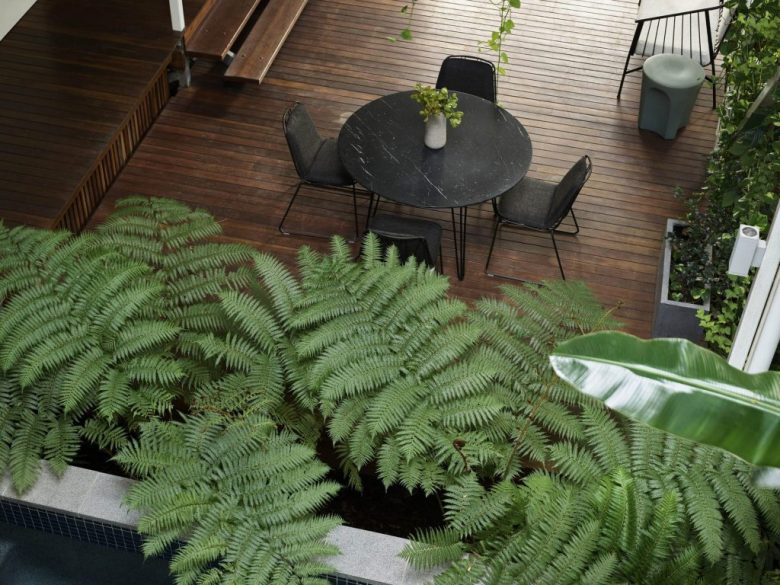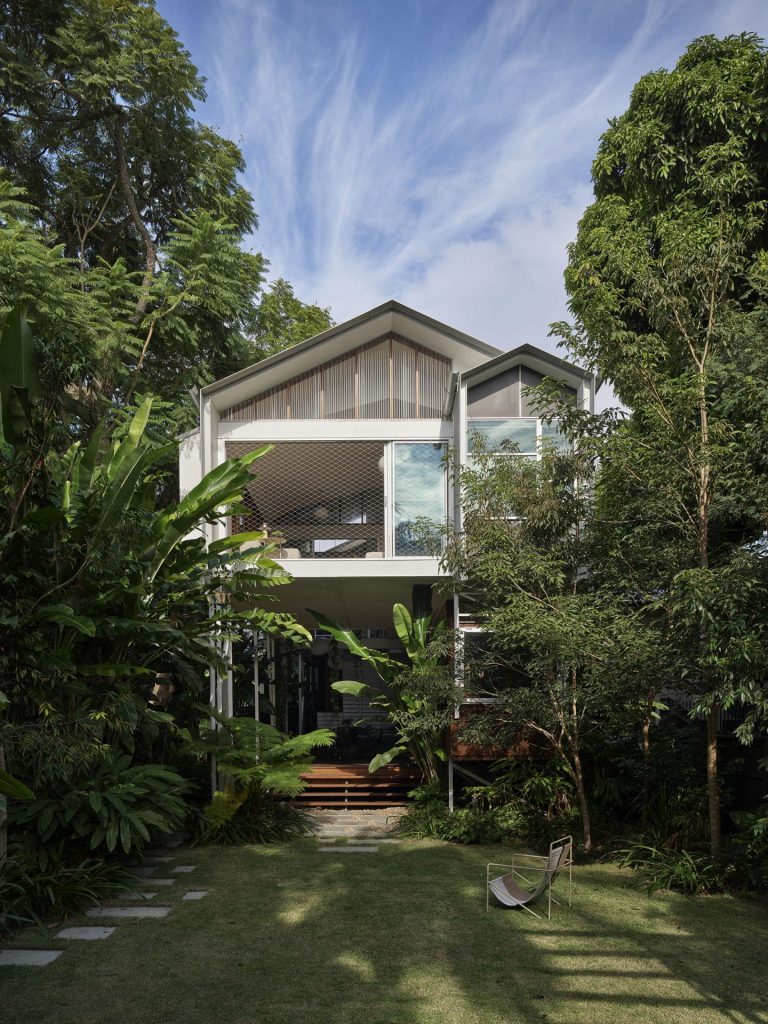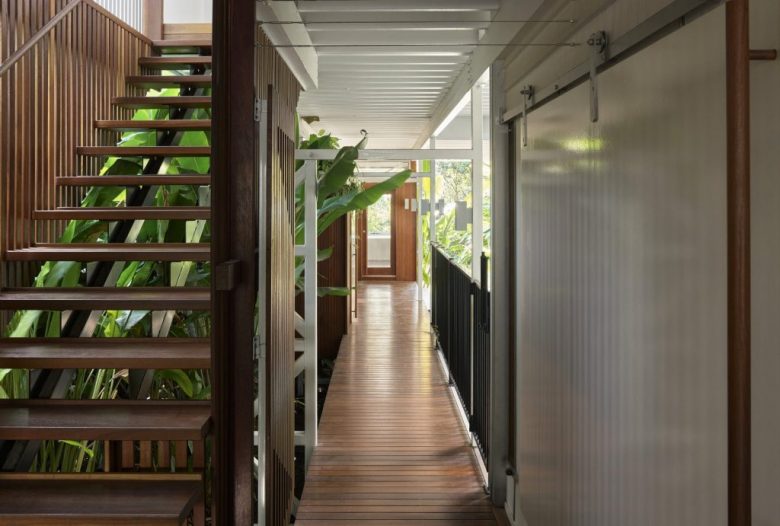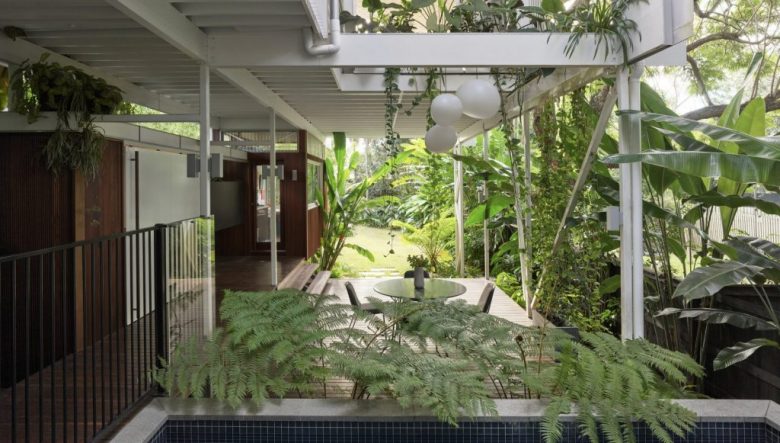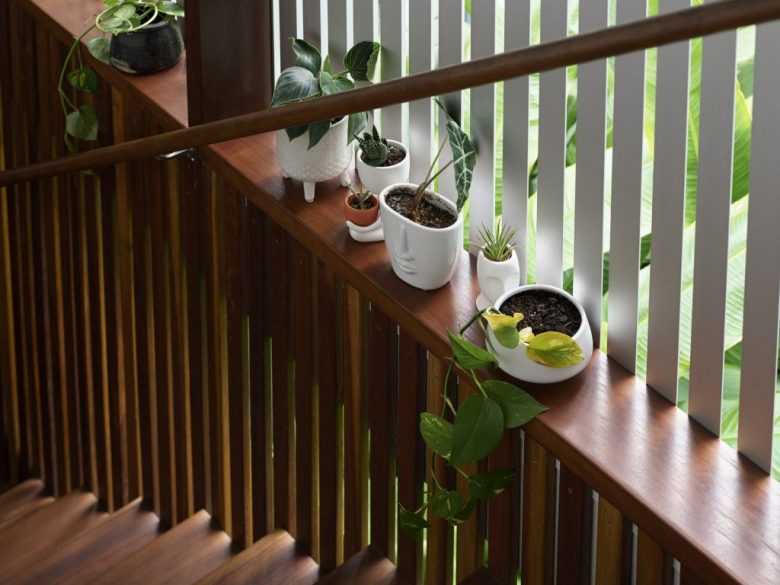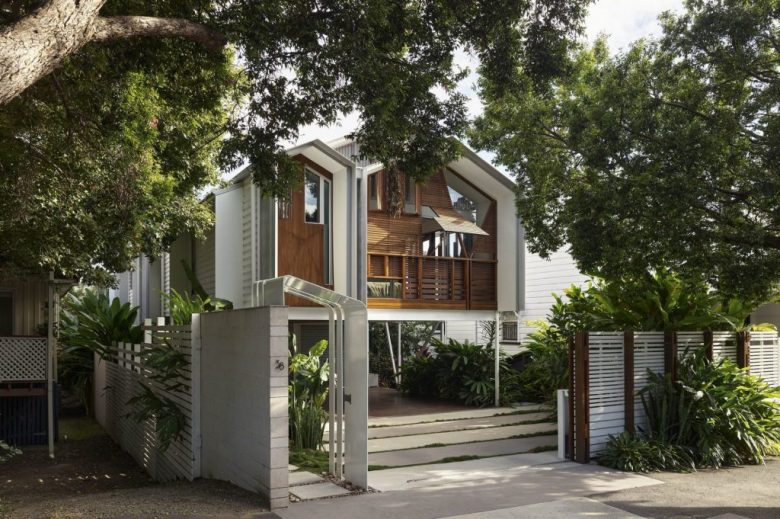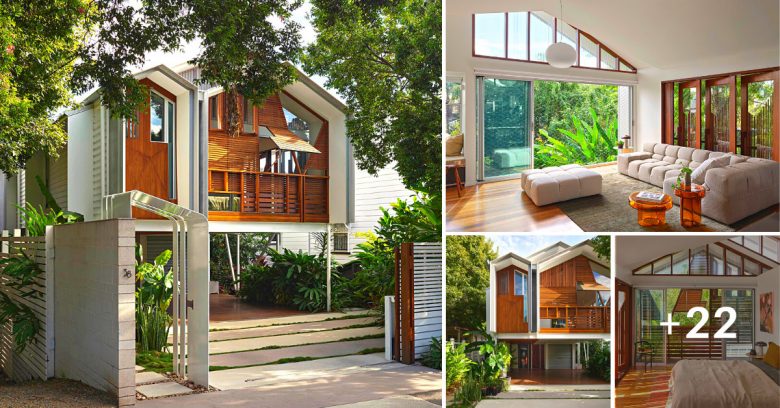
Design : Tim Bennetton
Photo : Toby Scott
Located on a long, sloping block within a flood plain, New Farm House was conceived as a direct response to the landscape. “With such a long site, we arranged the plan to address the street and flood zone.
With a long entry, you arrive through a courtyard which is technically exterior, but you feel quite sheltered,” explains Tim Bennetton.
The long edge of the house is oriented towards the north-east, with the entire façade on the upper floor being comprised of operable glazing units which make the most of the cooling breezes in summer and the warming sun in winter from that direction.
Deep eaves and vertical fins protect the glazed gable ends from direct sunlight and the floor plan is stepped apart into three pavilions allowing individual rooms to vent into adjacent voids.
The lower floor is almost entirely un-enclosed-aside from a 16-square-metre home office-the living spaces are shaded by the upper floor, open to any prevailing breeze and therefore do not require any active cooling year-round.
The enclosed floor area is relatively small for a new family home at 196-square-metres – particularly in comparison to nearby homes in the Inner-city suburbs of Brisbane.
This was achieved through an initial design process which Involved a rigorous questioning of which spaces are most integral to the clients brief, then planning flexible spaces rather than large ones, and also by designing for much of home life to be lived outside in the mild subtropical climate.
Historically, there has been a large amount of fill and impermeable surfaces used in the design of adjacent dwellings – therefore this block manages much of the water run-off for the surrounding area.
In response, the house is built on steel posts above the natural ground surface-protecting the house from stormwater damage, but also allowing water to flow underneath on the ground surface.
And offering an opportunity for run-off to be filtered through the soil into the water table, rather than rushing straight to stormwater or to houses downstream.
The glazing system of the house is a mix of standard aluminium-framed windows and doors and custom-built hardwood openings. This can be thought of as very ‘active’ house – with occupants being able to manipulate the skin of the building in order to manage breezes and the sun to suit their own comfort.
In summer, the bank of custom-built full-height pivot doors can be individually operated to catch cooling breezes, and full-height siding door with stainless steel mesh fall protection allow large openings at either end of the rooms.
A series of double-hung casements and louvres are strategically placed throughout to allow the entire house to breathe.
In winter external glazing can be closed and each compartment of the house can be closed up individually making it possible for passive/active heating means to work efficiently. Internal blinds and external shutters are employed to the east and west to manage solar load throughout the year.
.
.
.
.
.
.
Credit: timbennetton

